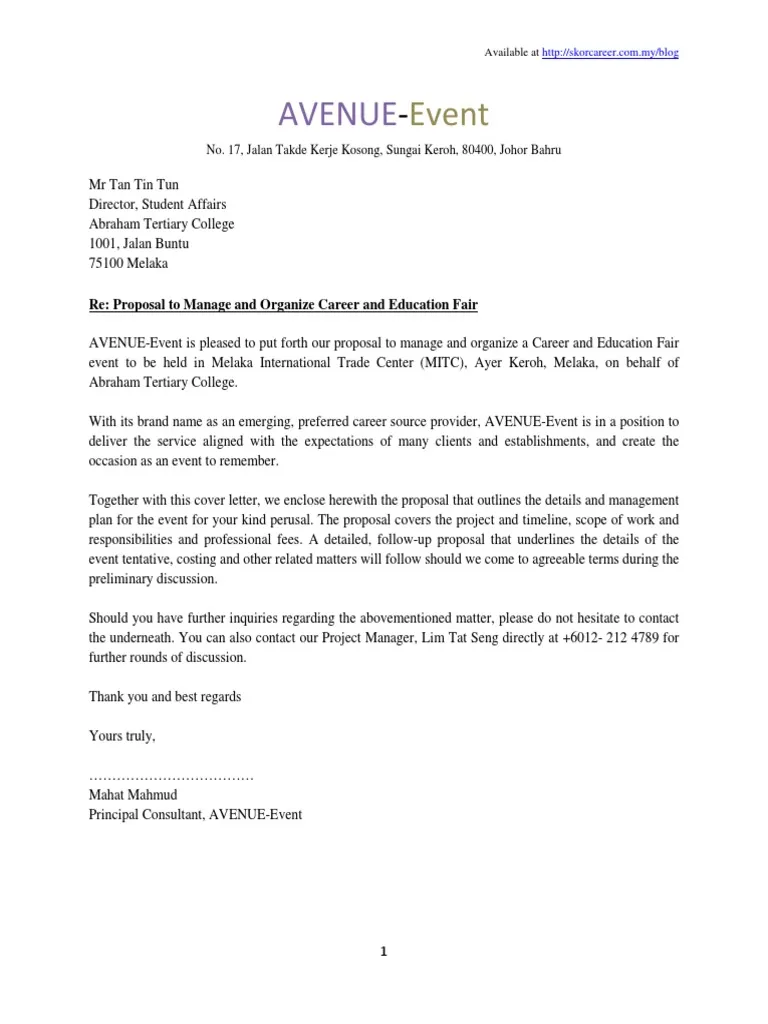What is a Cover Letter for a Business Proposal
A cover letter for a business proposal is a crucial document that accompanies your proposal. It serves as an introduction, a summary, and a persuasive argument, all rolled into one concise package. Think of it as your proposal’s first impression. This letter is designed to capture the reader’s attention, highlight the key benefits of your proposal, and encourage them to read the complete document. It provides context, showing why the recipient should care about your proposal and what’s in it for them. The cover letter is not just a formality; it’s a strategic tool to increase the chances of your proposal’s acceptance and getting your business goals achieved. Without a well-crafted cover letter, your proposal might be overlooked, or its importance underestimated.
Why a Cover Letter Matters
In a world saturated with information, a cover letter helps your business proposal stand out. It immediately communicates the value of your proposal to the recipient. It offers a personalized touch, showing that you’ve considered the recipient’s needs and tailored your proposal accordingly. The cover letter sets the tone for the entire proposal, demonstrating professionalism and attention to detail. It acts as a guide, pointing the reader toward the most critical parts of your proposal and helping them understand its significance. A well-written cover letter increases the likelihood that your proposal will be read and considered favorably, which directly impacts your ability to get new business opportunities and overall company growth. Moreover, it demonstrates respect for the recipient’s time and effort.
Key Components of a Cover Letter
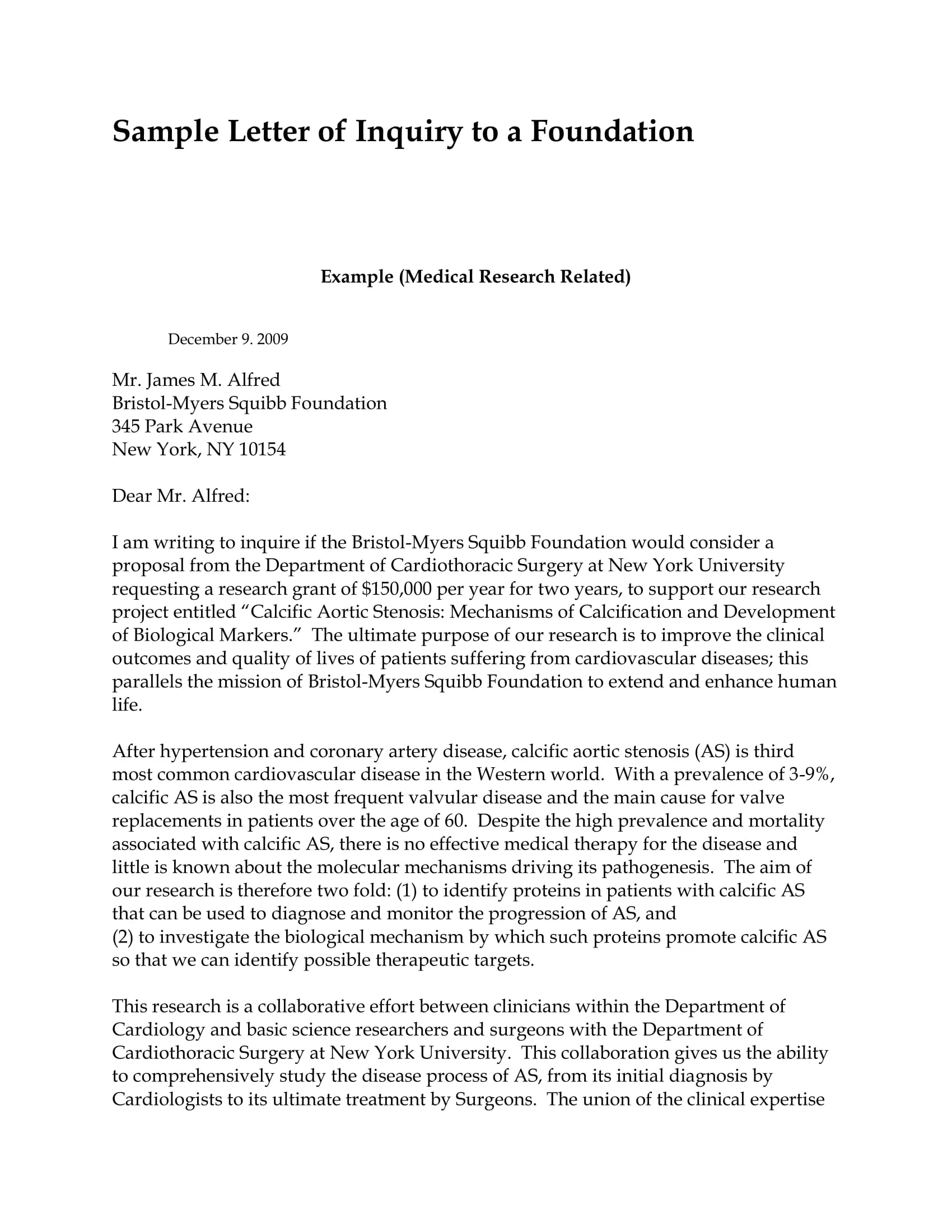
A well-structured cover letter comprises several essential components, each playing a crucial role in effectively communicating your message and securing the reader’s attention. These components, when combined, create a persuasive and compelling narrative, setting the stage for your business proposal’s success. It’s essential to organize your ideas in a logical order, ensuring clarity and easy readability. Paying close attention to these components will greatly enhance the effectiveness of your cover letter.
Your Contact Information
Begin with your contact information at the top left of the letter. Include your full name, job title (if relevant), company name, address, phone number, and email address. This ensures the recipient can easily reach you if they have questions or want to discuss your proposal further. Make sure this information is up-to-date and professional. A well-presented contact section reflects your professionalism and attention to detail, which is critical for creating a good first impression. Ensure your email address is professional and not a personal one.
Date
Directly below your contact information, include the date you are sending the cover letter. Use a standard date format (e.g., Month Day, Year). This helps in record-keeping and provides context for the recipient. The date also indicates when the proposal was prepared, which can be relevant if timelines or specific conditions are mentioned in the proposal itself. The date adds to the formality of the letter and helps establish a clear timeline for the proposal’s review and consideration.
Recipient Information
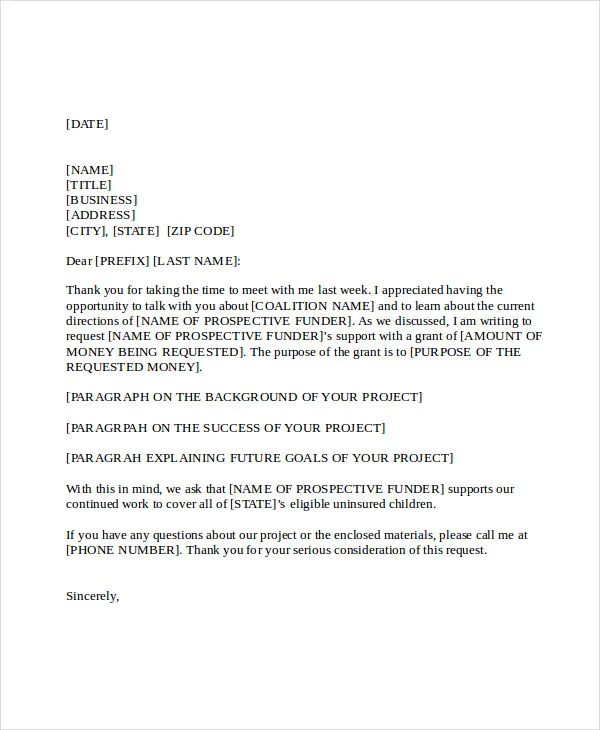
On the left side, a few lines below the date, include the recipient’s name, title, company name, and address. Addressing the letter to a specific person, rather than using a generic greeting, personalizes the letter and shows you’ve done your research. If you are unsure of the exact title, it is wise to search their name in LinkedIn. This level of personalization indicates that you value the recipient’s attention and are committed to a professional approach. Use their formal title unless you have an existing relationship that suggests a more informal approach is appropriate.
Salutation
Start with a professional salutation, such as “Dear Mr./Ms./Mx. [Last Name].” If you don’t know the name of the recipient, a safe option is “Dear Hiring Manager” or “Dear [Company Name] Team.” Avoid overly casual greetings. The salutation sets the tone for your entire letter. Correctly addressing the recipient by name immediately establishes a connection and shows that you have taken the time to personalize your approach. Choosing the right salutation demonstrates your understanding of professional etiquette and can make the reader more receptive to your message.
The Opening Paragraph
The opening paragraph is your opportunity to grab the reader’s attention and establish the purpose of your letter. It should be concise, clear, and compelling. State the purpose of your letter immediately, such as to introduce your business proposal or to respond to a specific request. Briefly mention what the proposal is about and what it aims to achieve. Use a tone that is professional yet engaging. This initial section sets the stage for your entire letter and helps the recipient understand why they should continue reading. Keep it brief; aim for three to four sentences that capture the essence of your proposal and why it matters to the reader.
Clearly State Your Purpose

The primary goal of your opening is to clearly state the purpose of your cover letter and, by extension, your business proposal. Be direct: immediately inform the reader why you are writing. For instance, you could state: “I am writing to submit a proposal for [Project Name]…” or “This letter introduces our proposal to enhance [Specific Area]….” Clarity here prevents confusion and helps the recipient quickly grasp the reason for your communication. Avoid ambiguous phrases; get straight to the point to quickly establish the context for your proposal and convey its value. This approach ensures the reader knows what to expect and why they should continue reading.
Highlight Proposal’s Value
In your opening, briefly mention the key benefits or value proposition of your proposal. What is the ultimate advantage of the recipient’s decision to read your proposal? This might include cost savings, increased efficiency, or solutions to their challenges. Highlighting the value in the initial paragraph captures the reader’s interest by showing the benefits of what you offer. Use strong, benefit-oriented language. The aim is to persuade the reader that the proposal is worth their time and will positively affect them or their company. Make this value clear and easy to understand so that the reader immediately appreciates its relevance.
Body Paragraphs
The body of your cover letter should expand on the key points you introduced in the opening paragraph. This is where you provide more detail about your proposal and highlight what makes it a good fit for the recipient. Keep these paragraphs focused, and avoid rambling or including unnecessary information. The body paragraphs are where you build your case, demonstrating your understanding of the recipient’s needs and the specific solutions that your proposal offers. Aim for a balance between providing enough detail to convey the value of your proposal and being concise enough to keep the reader engaged.
Key Proposal Highlights
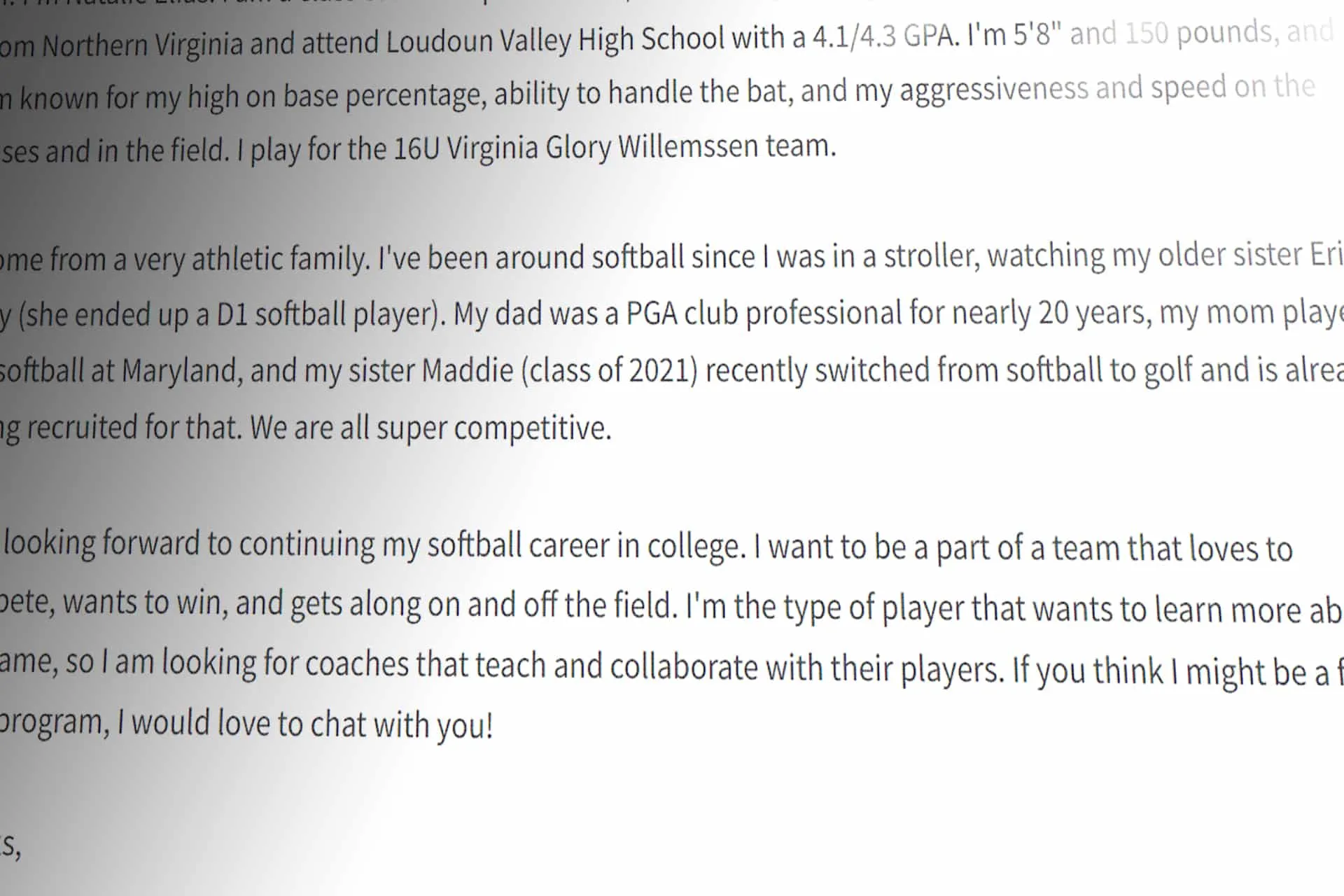
In the body of your letter, highlight the main points of your proposal. Focus on what sets your proposal apart and why it is relevant to the recipient’s needs. Mention key deliverables, methodologies, or specific benefits that the recipient will receive. Use strong, persuasive language to convey the value of your offering. Keep the focus on the recipient and how they will benefit from your proposal. Providing these specifics can boost interest and set the stage for a more detailed review of the proposal itself.
Address Potential Concerns
Anticipate the questions or concerns the recipient might have about your proposal and address them proactively. This shows you have considered their needs and are prepared to handle any potential issues. You could address potential risks, mention how your company addresses common problems, or explain how you provide the best possible experience. By addressing these concerns, you build trust and credibility. It also proves you have thought critically about the proposal and are confident in your ability to execute it effectively.
Call to Action and Closing
The closing paragraph should include a clear call to action and express your gratitude. This section provides a sense of closure and guides the recipient toward the next step. It should clearly state what you want the recipient to do next—such as reading your proposal, contacting you for a meeting, or approving the proposal. Keep it concise and professional.
Express Gratitude
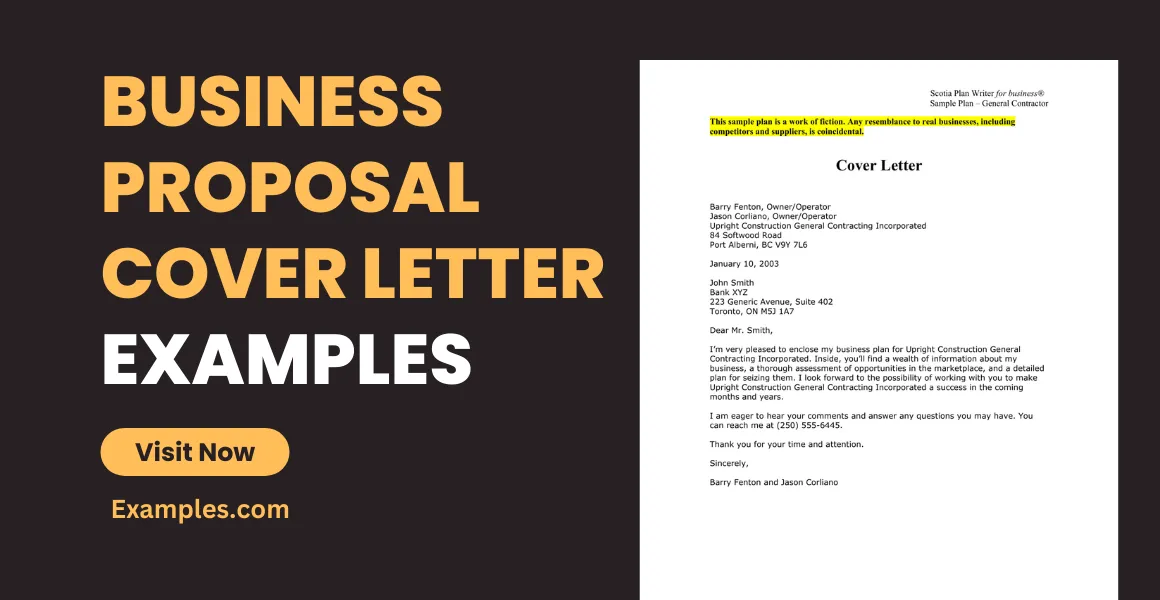
Express your gratitude to the recipient for their time and consideration. This shows appreciation and is a courtesy. You might say: “Thank you for considering our proposal” or “We appreciate your time and look forward to the opportunity to discuss this further.” This simple acknowledgment can leave a positive impression, reinforcing your professionalism and courtesy.
Include Contact Details
Reiterate your contact information or provide specific instructions on how the recipient should respond to your proposal. This makes it easier for them to reach out. Include your phone number, email address, or a link to schedule a meeting. Make it as easy as possible for the recipient to take the next step and engage with you. Ensure all contact information is correct to avoid delays or communication issues.
Formatting and Style Tips
The way you format and write your cover letter significantly affects how it is perceived. Adhering to the best practices helps to ensure your cover letter is professional, easy to read, and effective in conveying your message. Consistency is critical. Pay attention to every detail in formatting. Adhering to these tips can elevate the overall impact of your business proposal.
Keep it Concise
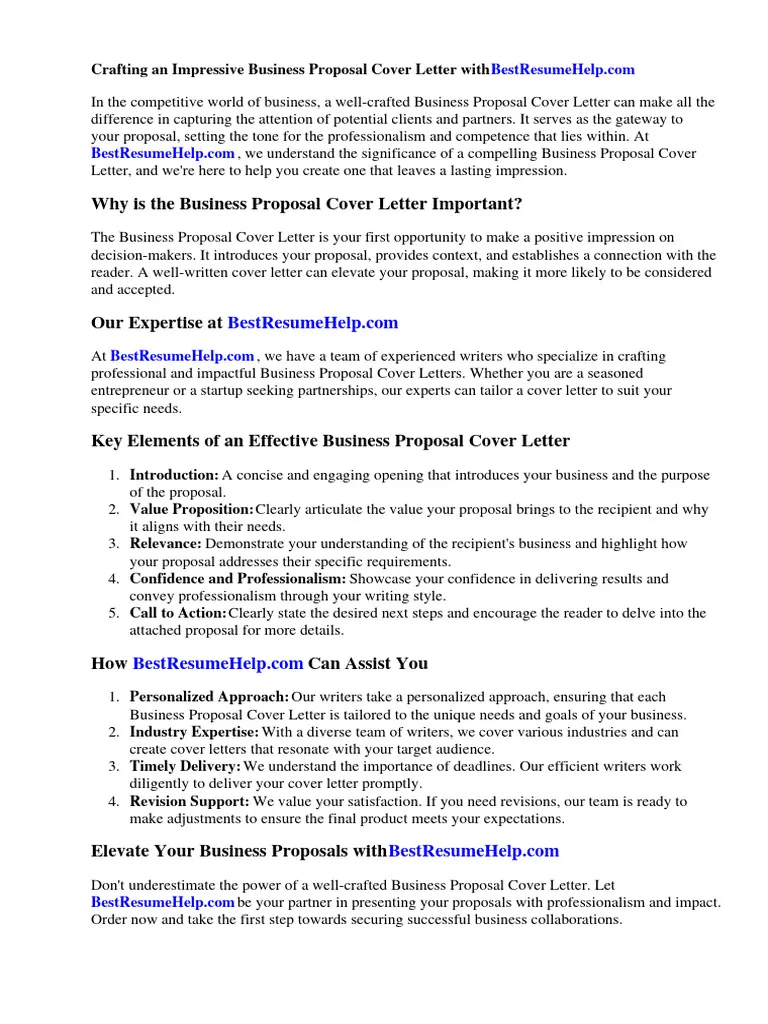
Keep your cover letter concise and to the point. Aim for one page maximum. Readers often skim, so get your most important points across quickly. Avoid unnecessary jargon or complex language. A concise letter shows respect for the reader’s time and increases the chances that they will fully read and understand your message. Condense your key message to a few focused paragraphs.
Use Professional Language
Use professional language throughout your cover letter. This includes proper grammar, punctuation, and formal tone. Avoid slang, contractions, and casual language. Your choice of words should convey professionalism and respect. A well-written cover letter with polished language reflects positively on your attention to detail and your overall professionalism. Professional language builds credibility and demonstrates your commitment to quality and clear communication. Ensure that the tone matches your company culture.
Proofread Carefully
Always proofread your cover letter before sending it. Check for any typos, grammatical errors, and formatting inconsistencies. Errors can undermine your credibility and diminish the impact of your letter. Proofreading is crucial and can be done with the help of tools like Grammarly. Proofreading is crucial because mistakes can reflect negatively on your professionalism and attention to detail. A well-proofread cover letter shows that you are serious about your proposal and have taken the time to ensure that everything is perfect.
Cover Letter Examples
Reviewing examples of cover letters for business proposals can provide valuable insights into how to effectively structure and present your own. Understanding the structure, tone, and key elements of successful cover letters will help you tailor your approach for maximum impact.
Example 1 Business Proposal
A sample cover letter might start with a clear statement of purpose, such as, “We are pleased to submit our proposal for…” It would then highlight the main benefits, such as, “Our solution will reduce your operational costs by 20%.” The body might briefly describe the proposed services and their key features. The closing would clearly define the next steps, “We are available to discuss this proposal at your convenience.” This example emphasizes clarity, brevity, and a strong call to action.
Example 2 Business Proposal
Another example could address a specific need or challenge. It would begin by acknowledging the need and then directly present the solution. The body might contain a brief overview of how the solution will solve the challenge. A strong closing paragraph would include a call to action and offer to schedule a meeting, for example, “We would be delighted to schedule a meeting to explore how our solution can help you succeed.” This structure creates a targeted approach, showing how the proposed solution is uniquely suited to the recipient’s challenges. Notice how each element is directly related to the reader’s circumstances.
Cover Letter Best Practices
By following best practices, you can significantly increase your cover letter’s effectiveness, and the overall success of your business proposals. These practices include tailoring the letter to the specific recipient, focusing on the benefits, and maintaining a professional tone. A well-crafted cover letter, written in accordance with best practices, will help you to get your business proposal noticed and get more business.
